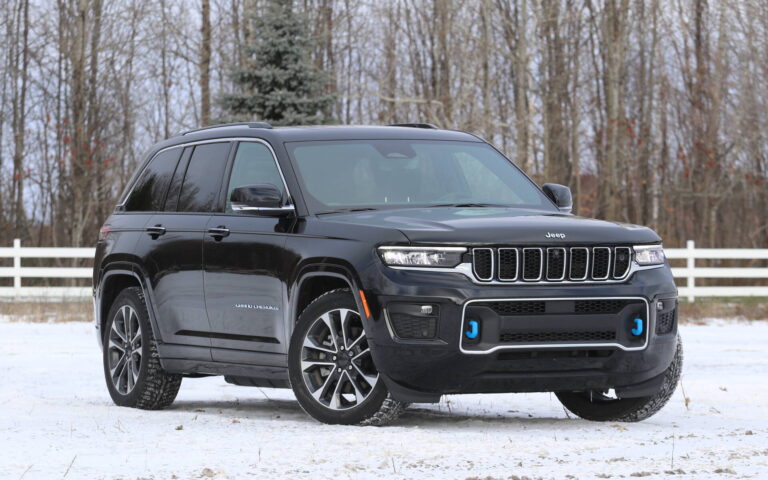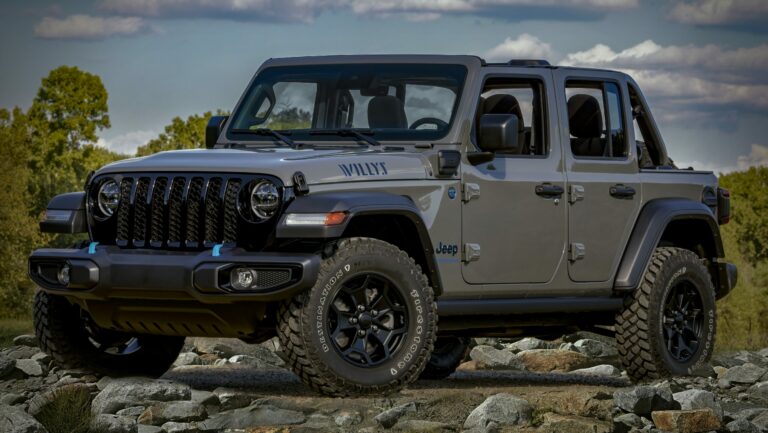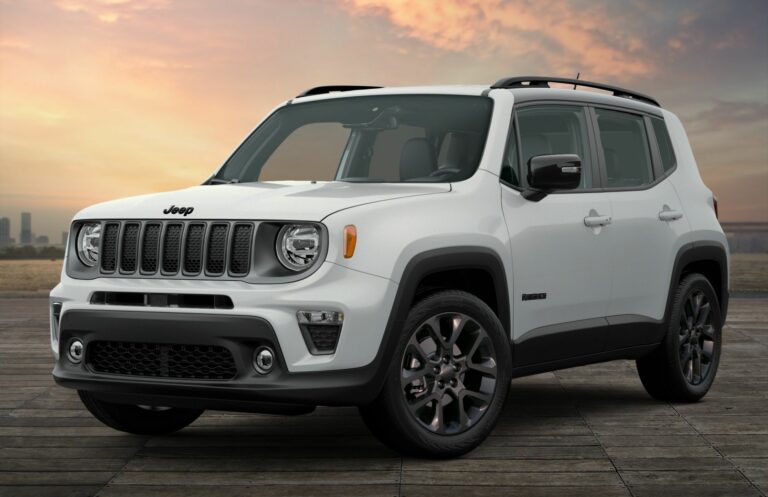1993 Jeep Sahara For Sale: A Comprehensive Buyer’s and Seller’s Guide to an Iconic Off-Roader
1993 Jeep Sahara For Sale: A Comprehensive Buyer’s and Seller’s Guide to an Iconic Off-Roader /jeeps.truckstrend.com
Introduction: The Timeless Allure of the 1993 Jeep Sahara
For enthusiasts of classic off-road vehicles, few names evoke as much nostalgia and capability as the Jeep Wrangler YJ, and among them, the 1993 Jeep Sahara stands out as a true icon. With its distinctive square headlights – a signature of the YJ generation – and unique Sahara-specific aesthetic, this vehicle isn’t just a mode of transport; it’s a statement, a piece of automotive history, and an open invitation to adventure. The "Sahara" trim level, introduced in 1991, elevated the YJ beyond a utilitarian workhorse, offering a more refined (for a Jeep!) and visually appealing package that quickly became synonymous with the adventurous spirit of the early 90s, even making appearances in popular culture like the film "Jurassic Park."
1993 Jeep Sahara For Sale: A Comprehensive Buyer’s and Seller’s Guide to an Iconic Off-Roader
Today, the demand for well-preserved or thoughtfully modified 1993 Jeep Sahara models remains strong. They offer a unique blend of vintage charm, robust off-road capability, and a relatively straightforward mechanical design that appeals to both seasoned mechanics and first-time classic vehicle owners. Whether you’re looking to acquire a piece of automotive heritage or preparing to part ways with your beloved YJ Sahara, understanding its intricacies, market value, and the key considerations involved is paramount. This comprehensive guide aims to equip you with all the necessary information to navigate the exciting world of the 1993 Jeep Sahara for sale.
The Enduring Appeal of the 1993 Jeep Sahara YJ
The YJ generation (1987-1995) of the Jeep Wrangler marked a significant evolutionary step from its CJ predecessors, primarily distinguished by its rectangular headlamps – a design choice that initially sparked debate but has since become an endearing, defining characteristic. Within this generation, the Sahara trim represented the pinnacle of available features and aesthetic upgrades.
Key Sahara-Specific Features:
- Unique Appearance: Sahara models typically featured body-color fender flares, special "Sahara" decals, and often came in distinctive paint colors like the iconic Forest Green or Tan.
- Interior Upgrades: The interior boasted unique green and tan cloth seating, door panels, and carpeting, setting it apart from standard YJ interiors.
- Enhanced Comfort (for a Jeep): While still rugged, the Sahara offered amenities like a padded roll bar, a stereo system with a cassette player, and sometimes even air conditioning – features that were considered luxuries in a bare-bones off-roader of its time.
- Optional Hardtop: Many Sahara models were optioned with a full hardtop, providing better insulation and security than the standard soft top, though both are interchangeable.

Powertrain Options:
The 1993 Sahara was primarily offered with two engine choices:
- 2.5L AMC I4 (123 hp): A reliable, fuel-efficient (relatively speaking for a Jeep) four-cylinder that’s adequate for light trails and city driving.
- 4.0L AMC I6 (180 hp): The undisputed king of the YJ engines. Known for its legendary durability, strong low-end torque, and ease of maintenance, this inline-six is highly sought after by off-roaders and daily drivers alike.
Both engines were typically paired with either a 5-speed manual transmission (AX-15 for the 4.0L, AX-5 for the 2.5L) or a 3-speed automatic (30RH for the 2.5L, 32RH for the 4.0L). The Command-Trac NP231 transfer case provided part-time 4×4 capability, a hallmark of Jeep’s rugged nature. The combination of solid axles (Dana 30 front, Dana 35 or optional Dana 44 rear) and leaf spring suspension made it a capable off-road machine, easily modified for more extreme adventures.
.jpg?t=166338629723)
What to Look For When Buying a 1993 Jeep Sahara: A Buyer’s Guide

Acquiring a vintage vehicle like the 1993 Jeep Sahara requires a keen eye and thorough inspection. These Jeeps are renowned for their toughness, but age and previous owners’ treatment can take their toll.
- Frame Rust (Critical!): The absolute most important area to inspect. Pay close attention to the frame rails, especially near the skid plate, spring hangers, and rear sections. Rust can severely compromise structural integrity. Surface rust is often manageable, but rot or extensive pitting requires professional attention and can be a deal-breaker.
- Body Rust: Common areas include the floorboards (especially under the pedals and seats), rocker panels, tailgate (around the hinges and spare tire mount), and front fender wells. Small bubbles might indicate deeper issues.
- Engine Condition:
- 4.0L I6: Check for oil leaks (rear main seal is common but not always catastrophic), coolant leaks, and any unusual noises. Listen for a "tick" (often lifters, which can be minor) or knocks. Check the color of the exhaust smoke.
- 2.5L I4: Similar checks, ensuring it runs smoothly.
- Maintenance Records: Ask for any service history. Regular oil changes and cooling system maintenance are crucial.
- Transmission and Drivetrain:
- Manual: Check clutch engagement, smooth shifting, and absence of grinding.
- Automatic: Ensure smooth shifts, no slipping, and correct fluid levels/color.
- Transfer Case: Engage 4WD high and low. Listen for grinding or clunking.
- Axles/Differentials: Check for leaks around the differential covers and pinion seals.
- Suspension and Steering:
- Leaf Springs: Check for sagging, broken leaves, or worn bushings.
- Shocks: Look for leaks or excessive bounce.
- Steering: Check for excessive play in the steering wheel. Common culprits include the steering box, tie rod ends, drag link, and ball joints.
- Electrical System: Test all lights, gauges, wipers, horn, and the heater/AC. Wiring issues can be frustrating in older vehicles.
- Interior Condition: While not a structural concern, assess the condition of the unique Sahara seats, carpet, and dashboard. Replacements can be found, but originality adds value.
- Modifications: Many YJs have been modified. Inspect lift kits, larger tires, aftermarket bumpers, and winches for quality of installation and potential stress on other components. A poorly installed lift can lead to serious handling issues.
- Documentation: Always verify the vehicle’s title is clear and matches the VIN. A history report (CarFax/AutoCheck) can reveal past accidents or title issues.
Benefits of Owning a 1993 Jeep Sahara
Owning a 1993 Jeep Sahara is more than just having a vehicle; it’s an experience.
- Iconic Design & Classic Status: The square headlights and overall rugged aesthetic are instantly recognizable and hold significant appeal for collectors and enthusiasts.
- Unmatched Off-Road Prowess: Thanks to its simple, robust design, solid axles, and short wheelbase, the YJ Sahara is incredibly capable on trails, rocks, and mud, especially with the 4.0L engine.
- Customization Heaven: The aftermarket support for the YJ is immense. From lift kits and larger tires to bumpers, winches, and interior upgrades, you can truly make it your own.
- Mechanical Simplicity: Compared to modern vehicles, the 1993 YJ is relatively simple to work on, making it a great learning platform for DIY mechanics. Less electronics mean fewer complex issues.
- Strong Community: The Jeep YJ community is vast and supportive, offering a wealth of knowledge, advice, and camaraderie.
- Holds Value: Well-maintained and original examples of the Sahara trim tend to hold their value well, and in some cases, even appreciate as they become rarer.
- Open-Air Freedom: The removable doors, fold-down windshield, and various top options (soft top, hardtop, bikini top) offer an unparalleled open-air driving experience.
Challenges and Solutions in Owning a Vintage Jeep
While rewarding, owning a vintage Jeep comes with its own set of challenges.
- Rust: The biggest enemy. Solution: Thorough pre-purchase inspection, regular washing (especially after off-roading or winter driving), rustproofing treatments, and prompt repair of any developing rust spots.
- Age-Related Wear: Rubber components (hoses, belts, bushings), seals, and electrical connections degrade over time. Solution: Proactive maintenance, replacing wear items before they fail, and keeping spare parts on hand for common issues.
- Fuel Economy: YJs are not known for their fuel efficiency, especially with the 4.0L engine and larger tires. Solution: Accept it as part of the package. Optimize engine tune-up, maintain proper tire pressure, and consider driving habits.
- On-Road Manners: Compared to modern SUVs, the YJ can feel a bit rough, noisy, and prone to wandering steering. Solution: Ensure suspension components are in good condition, proper alignment, quality shocks, and consider steering box brace or upgraded steering components for better road feel.
- Parts Availability: While many mechanical parts are readily available, some Sahara-specific trim pieces can be harder to source. Solution: Check online forums, specialty Jeep salvage yards, and aftermarket reproduction companies. Be patient.
- Finding a Good Example: Many YJs have been heavily modified, neglected, or abused. Solution: Be patient in your search, be willing to travel, and prioritize a solid, rust-free frame over cosmetic perfection.
Tips for Selling Your 1993 Jeep Sahara
If you’re looking to sell your 1993 Jeep Sahara, strategic preparation can significantly enhance its appeal and value.
- Thorough Cleaning & Detailing: A clean Jeep, both inside and out, makes a powerful first impression. Detail the interior, clean the engine bay, and wash/wax the exterior.
- Address Minor Issues: Fix small, inexpensive problems like burnt-out bulbs, non-functioning gauges, or minor leaks. These small fixes can prevent potential buyers from nitpicking or thinking the vehicle is neglected.
- Gather Documentation: Collect all service records, original owner’s manuals, and any receipts for modifications or major repairs. This builds trust and demonstrates a history of care.
- High-Quality Photography: Take numerous clear, well-lit photos from various angles (exterior, interior, engine bay, undercarriage if possible). Highlight unique Sahara features and any desirable modifications. Showcase the top-off experience.
- Write a Detailed and Honest Description: Be comprehensive. List the engine type, transmission, mileage, any modifications (lift, tires, etc.), recent maintenance, and the overall condition. Be transparent about any known flaws (e.g., "minor rust on passenger rocker," "AC needs recharge"). Honesty builds trust.
- Research Market Value: Use online classifieds (Craigslist, Facebook Marketplace, Bring a Trailer, specialized Jeep forums) to research what similar 1993 Jeep Saharas are selling for in your region, factoring in condition, mileage, and modifications.
- Choose the Right Platform: Consider enthusiast forums (like JeepForum.com, WranglerForum.com), dedicated classic car/Jeep websites, or auction sites for broader reach to serious buyers. Local classifieds can also work for a quick sale.
- Be Prepared for Questions: Buyers will have many questions. Be knowledgeable about your Jeep’s history and mechanics.
1993 Jeep Sahara For Sale: Estimated Price Guide
Please note that prices for vintage vehicles like the 1993 Jeep Sahara can fluctuate significantly based on geographic location, specific vehicle history, originality, modifications, and market demand. This table provides a general guideline.
| Condition Category | Estimated Price Range (USD) | Key Characteristics |
|---|
The 1993 Jeep Sahara, an iconic variant of the Wrangler YJ generation, stands as a cherished classic in the off-road community. Known for its distinctive square headlights—a departure from the round lights of its CJ predecessors—and its unique green and tan interior, the Sahara trim level offered a blend of rugged capability with a touch of visual flair. It gained significant popularity, notably appearing in the blockbuster film "Jurassic Park," cementing its place in pop culture history.
For enthusiasts, collectors, and adventurous spirits alike, finding a 1993 Jeep Sahara for sale represents an opportunity to own a piece of automotive heritage. These vehicles are celebrated for their simplicity, durability, and immense customization potential, making them ideal for everything from weekend trail adventures to unique daily drivers. However, as with any classic vehicle, understanding the nuances of buying and selling a 1993 Jeep Sahara is crucial to ensure a rewarding experience.
The Enduring Appeal of the 1993 Jeep Sahara YJ
The Jeep Wrangler YJ, produced from 1987 to 1995, was the first iteration of the Wrangler nameplate, succeeding the venerable CJ series. While its square headlights were initially controversial among purists, they’ve become a defining and beloved characteristic that sets the YJ apart. The 1993 model year falls squarely in the middle of this generation, benefiting from several refinements while retaining the rugged, no-nonsense spirit of early Jeeps.
The "Sahara" trim level, introduced in 1991, took the YJ’s appeal a step further. It wasn’t just about utility; it was about style and a slightly more comfortable experience. Key Sahara-specific features included:
- Distinctive Exterior: Often painted in Forest Green Metallic or Tan, the Sahara sported body-color fender flares, unique "Sahara" decals on the hood and sides, and frequently came with the desirable full hardtop option.
- Signature Interior: The interior was a visual treat, featuring special green and tan cloth seats, matching door panels, and carpeting. This unique color scheme remains a hallmark of the Sahara edition.
- Added Amenities: While still a rugged off-roader, the Sahara trim typically included a padded roll bar, a more advanced (for its time) stereo system with a cassette player, and often air conditioning, enhancing driver and passenger comfort.
Under the hood, the 1993 Sahara offered two primary engine choices:
- 2.5L AMC Inline-4 (123 hp): A capable four-cylinder engine known for its reliability and decent fuel economy (by Jeep standards). It’s suitable for light off-roading and general commuting.
- 4.0L AMC Inline-6 (180 hp): This engine is the powerhouse of the YJ line-up and is highly sought after. Renowned for its legendary durability, strong low-end torque, and relatively straightforward maintenance, the 4.0L makes the Sahara a much more capable vehicle for serious off-roading and highway driving.
Both engines were typically paired with either a 5-speed manual transmission (the robust AX-15 for the 4.0L, AX-5 for the 2.5L) or a 3-speed automatic (32RH for the 4.0L, 30RH for the 2.5L). The Command-Trac NP231 transfer case provided reliable part-time 4×4, and the solid axle setup (Dana 30 front, Dana 35 rear, or the rarer Dana 44 rear option) with leaf spring suspension made it an easily modified and highly capable off-road machine. This blend of classic aesthetics, robust mechanicals, and a touch of unique styling contributes to the 1993 Jeep Sahara’s enduring appeal.
What to Look For When Buying a 1993 Jeep Sahara: A Comprehensive Buyer’s Guide
Purchasing a 1993 Jeep Sahara requires diligence, as age and previous ownership can significantly impact its condition. Here’s a detailed checklist for potential buyers:
- Frame Rust (The Absolute Priority): This is the single most critical area to inspect. Pay meticulous attention to the entire frame, especially around the skid plate, spring hangers, shackle mounts, and the rear sections. While surface rust is common and often treatable, any significant perforation, flaking, or rot indicates severe structural compromise and should be a major red flag. Tap suspected areas with a small hammer to check for soundness.
- Body Rust: Common rust spots on the YJ body include:
- Floorboards: Especially under the pedals and seats, and around the drain plugs. Lift the carpets if possible.
- Rocker Panels: The areas below the doors.





